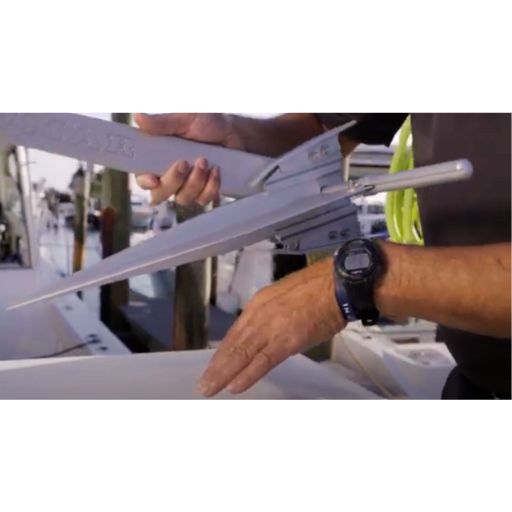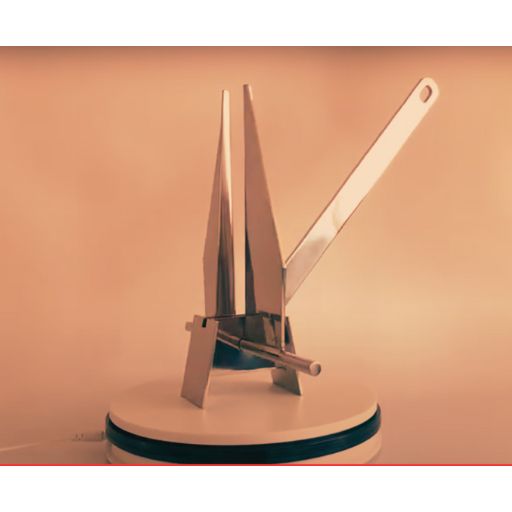Choosing the best anchor for pontoon boat on a lake is crucial for safety and stability. That will ensure the vessel stays in position during wind, preventing drifting and reducing the risk of collisions with other boats or obstacles. When choosing an anchor, you need to consider factors such as the size and weight of your pontoon boat, the composition of the lake bottom (sand, mud, rock), prevailing weather conditions, and the anchor’s holding capacity. Additionally, it would help if you thought about ease of deployment and retrieval and storage space on your boat.

Some of the best anchor for pontoon boat on a lake
Some of The best anchor for pontoon boat on a lake are discussed here. Based on extensive research and user feedback, top recommendations for anchors for pontoon boats on a lake include a lightweight and efficient fluke anchor known for its high holding capacity on various lake bottoms. A sturdy plow anchor, its durable construction is excellent. Distinguished holding capacity will make it ideal for larger pontoon boats and various lake conditions. For smaller vessels, a compact mushroom anchor will offer ease of deployment and space-saving design. Owners can choose the best option based on their needs and lake conditions.
Fluke (Danforth) Anchor
Description: Anchor A is a Fluke (Danforth) anchor made from high-grade galvanized steel. It is designed to provide excellent holding power on various lake bottoms.
Benefits
- High retention capacity
- Lightweight and very easy to handle
- It has a foldable system for compact storage.
- It would be suitable for sandy or muddy lake bottoms.
Disadvantages
- Can fight on rocky or weedy lake bottoms
- Adequate scope will be required for proper holding.
Suitable Lake Conditions: This anchor best suits lakes with sandy or muddy bottoms and moderate currents. It will perform poorly in rocky or weedy conditions.

Plow anchor
Description: The plow anchor is made from heavy-duty stainless steel. Which has a pivoting shank for quick setting and retrieval
Benefits
- Various lake bottoms have excellent holding capacity.
- It has a durable and corrosion-resistant system.
- It has a self-launching design for easy deployment.
- Best suited to rocky or weedy lake bottoms.
Disadvantages
- It’s heavier than some other anchor types. More storage space will be required.
Suitable Lake Conditions: Anchor suits various lake bottoms, including sand, mud, gravel, rocks, and weeds. Its versatility makes it an excellent choice for most lake environments.
Mushroom anchor
Description: Anchor C is a heavy cast iron mushroom anchor with a wide mushroom-shaped head for maximum holding capacity.
Benefits
- Soft lake bottoms have tremendous holding capacity.
- Compact and easy to store.
- There will be minimal risk of snagging on debris or vegetation.
Disadvantages
- It will be less effective on hard or rocky lake bottoms.
- It will have limited suitability for lakes with strong currents.
Suitable Lake Conditions: It best suits lakes with soft bottoms like mud or clay and minimal current. It may function poorly in rocky or turbulent lake conditions.
Elements to Consider
Elements to consider when choosing an anchor for a pontoon boat on a lake are
Lake Status
Choose an anchor fit for the lake’s depth where you will be boating, supplying enough line to reach the bottom safely. In those states, the anchor will feel the lake’s lowest surface to grip.
Boat size and weight
The size and importance of your pontoon plate should be compared with the anchor’s size and capacity. Delivering it can safely anchor the ship in position.
Carrying Capacity
Regard the anchor’s holding ability against anticipated and lake current needs and choose one with adequate power to keep the boat stable.
Ease of use and storage
Choose an anchor with features such as a folding or collapsible design for convenient storage aboard a floating vessel. The commentator should be easy to deploy and recover.
Tips for Anchoring a Pontoon Boat on a Lake
Anchoring a pontoon boat on a lake requires some necessary steps to ensure safety and stability.Select the right site with the proper water depth and lowest state. Drop the anchor gradually and steadily, allowing it to catch on the bottom. Leave adequate commentator line (road) to deliver the proper scope of requirements.

Use the reverse throttle to set the commentator and ensure it digs down. Secure the anchor line to a cleat or other important point on the vessel to prevent slipping. Check the anchor for any indications of wear or wear, such as bent chances or rusty areas.
Inspect anchor posts for scrapes, corrosion, or weak areas and replace them as required. Clean the commentator and ride regularly to clear any advertisement affecting implementation. We still need to carry sufficient anchors, ride for the conditions, and have a backup plan if the direct anchor fails. We should also monitor weather situations and re-anchor if circumstances deteriorate.
In Ending
Your boat’s height, placement, and bottom needs dictate your anchor type and taste. Financing in a high-quality commentator can make your devices more efficient, and your available bowling tries and tries.
Landing a pontoon boat in a Hadeo can be learned with comments and details. Proper mooring procedures, anchor maintenance, and inspections will enhance your safety and protection. So you can have a worry-free sail on the water. Be ready to adapt your anchoring method with utmost vigilance to changing situations and needs. With the suitable anchor and knowledge, you should be able to guide your float bow with Hong Kong and endless locations. Thank you for reading the title article, The best anchor for pontoon boat on a lake
Best Boat Anchors for Lakes in 2024
FAQs
What type of anchor is best for a pontoon boat?
The 14-lb Hurricane Anchor is our multiple famous choice for a float boat anchor. Since pontoon boats are typically lighter than equivalent-length fiberglass boats, it is excellent for boats up to 30 feet long.
How weighty of an anchor do you require for a pontoon?
Fifteen-foot pontoons need an anchor of at least 20 lb—30 lb in weight to hold. It might be a good idea to ask a store employee to discuss your vessel and recommend the most appropriate anchor.
What type of anchor is best for the Great Lakes?
Anchors are selected for the kind of bottom you will have beneath you, as well as for their holding power. The most typical anchors on the Great Lakes are the Danforth, the CQR/Plow, and the Bruce. The Danforth anchor uses two giant, flat, hinged chances to dig into the base and set.
